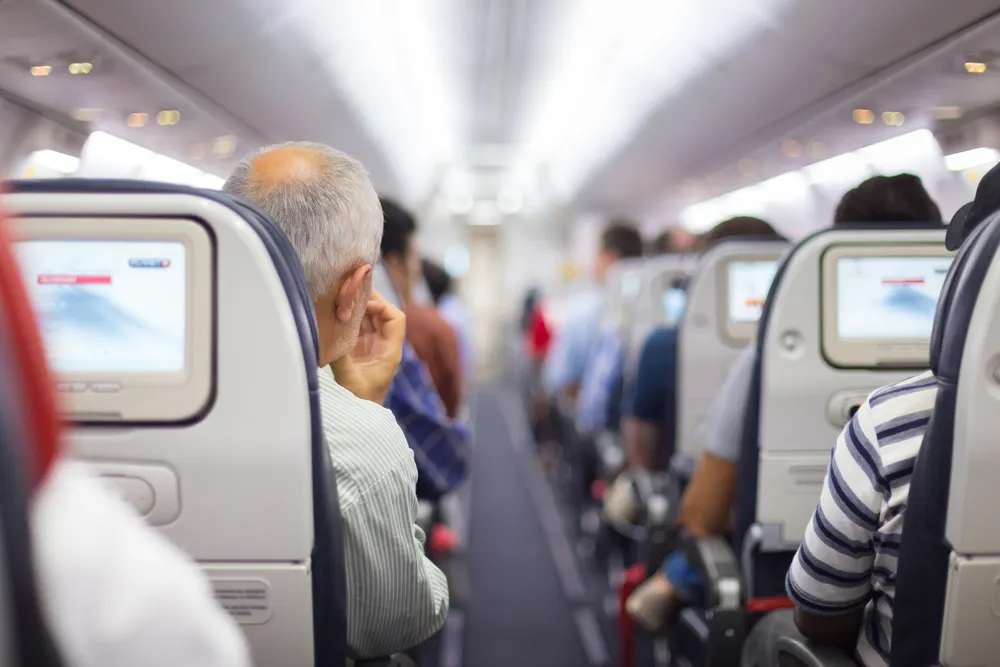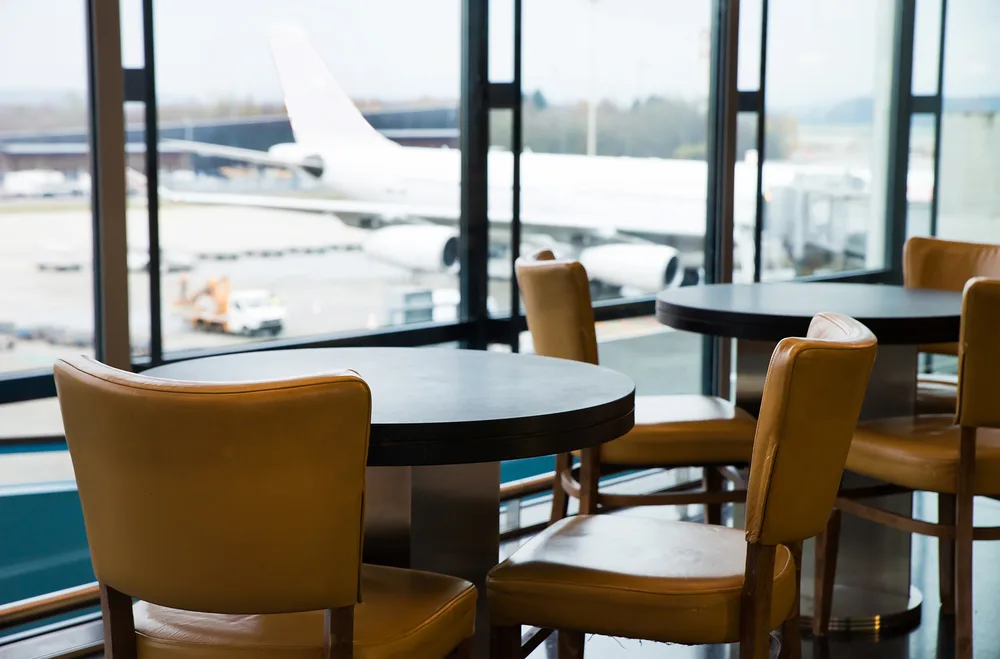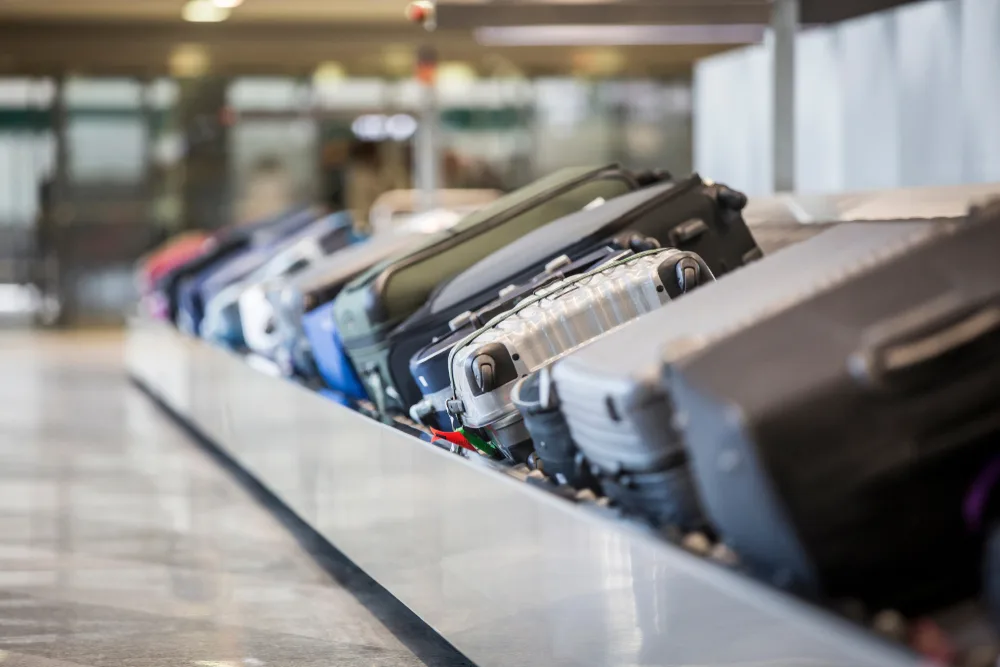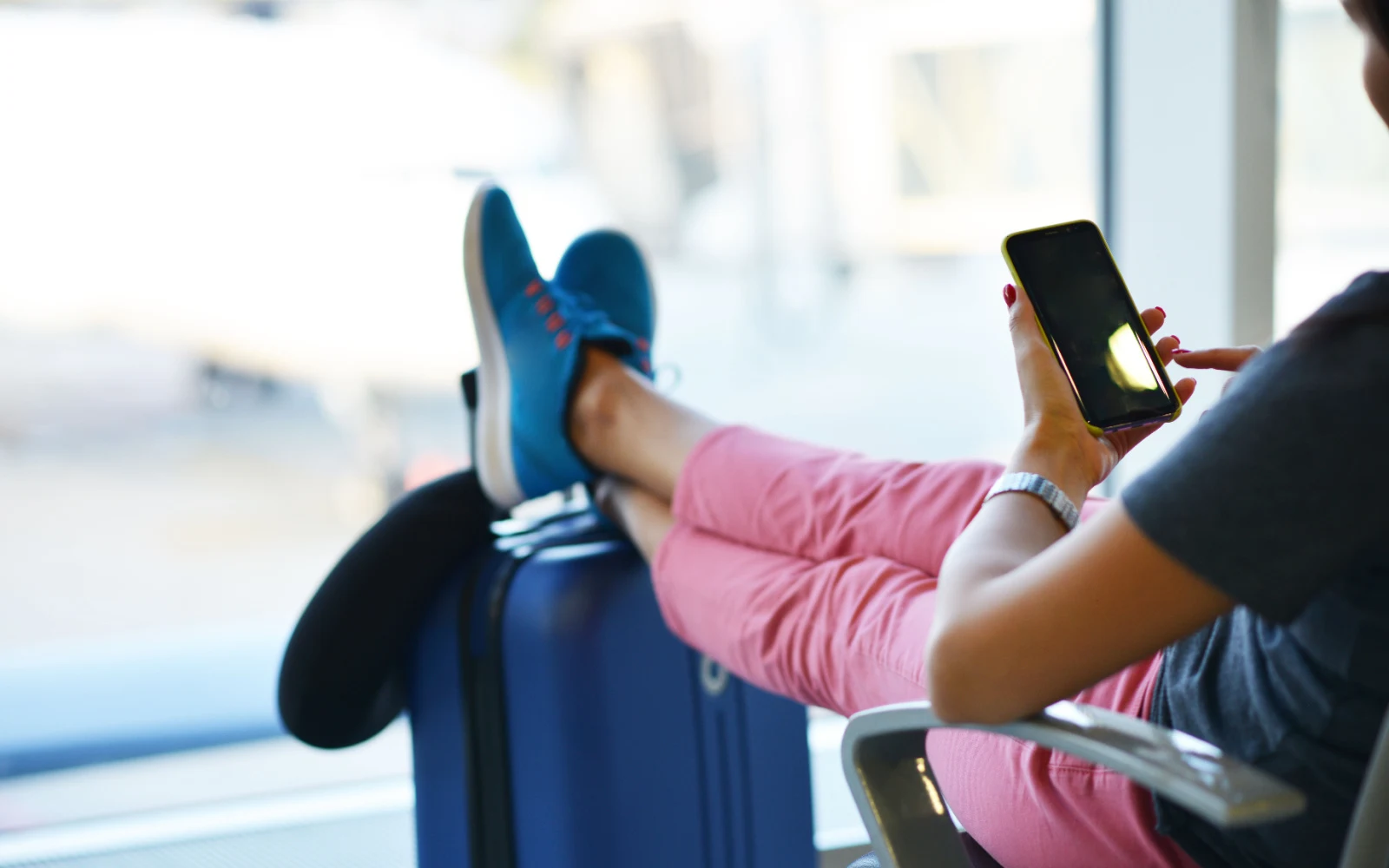You know these stops mean spending more time at the airport, but what is a layover? Is it different from a stop or stopover? How long does a layover take?
We answer these questions in detail below to help you decide if it’s worth booking a flight with layovers or opting for a nonstop flight instead.
What Is a Layover?

PeopleImages.com – Yuri A/Shutterstock
In the whimsical world of air travel, layovers are a harsh reality that can easily pop your happy travel bubble when you’re browsing flights.
You probably have a good understanding of the layover concept — they add extra time to your flight and may mean you’ll spend a few more hours at the airport — but what is a layover, exactly?
When your plane lands at an airport en route to the final destination and you wait for a period of time (usually 45 minutes to a few hours) before boarding another plane and continuing on the route, that’s a layover.
Layovers are the most common type of break on a plane itinerary and almost always involve deboarding the plane before boarding a new plane on your connecting flight.
If you book a flight with a layover (or two), all of your connecting flights will probably be on the same ticket, making your booking and travel process much easier.
You also won’t have to collect your baggage and bring it on your connecting flight in most cases. Instead, it’ll be sent to your final arrival airport where you can collect it and carry on with your trip.
In short, layovers are the waiting period, or break, between your connecting flights. If you’re flying nonstop, you won’t have a layover.
But if you’re flying on a route with stops, layovers, or stopovers, plan on spending a little or a lot more time on the plane and waiting around at the airport.
The differences between layovers, stops, and stopovers can be confusing because these aviation terms are all so similar. Let’s take a look at what’s different about each one.
Is a Layover Different From a Stop or Stopover?
Layovers are different from stops and stopovers.
Although these terms are sometimes used interchangeably and all refer to types of breaks or interruptions on a flight route, the differences between them can make a big difference in your flight itinerary.
A flight with 1 stop is going to be much shorter than a flight with a layover or a stopover.
And only a flight with a stopover gives you the chance to get out and explore a new city while you wait for a connecting flight!
It’s important to compare and contrast these 3 types of route breaks, so let’s take a look at how they differ.
Layover vs. Stop

Matej Kastelic/Shutterstock
- Layovers are 45m-24h; stops are 1h-2h
- On stops, passengers board/deplane and plane refuels
- Passengers may or may not need to deplane during a stop
Layovers are typically longer than stops. Stops are brief pull-offs at an airport en route to your final destination. Many don’t even require you to deplane.
Stops are scheduled on longer flights or to manage the flow of an airline’s passengers in an efficient way.
Layovers are scheduled to allow passengers to board a different connecting flight that will travel all the way to the next or final destination.
Airlines schedule stops to allow passengers to board/deplane and refuel the plane. You may not even have to get off the plane during a stop!
Layovers, on the other hand, usually involve deplaning, waiting at the airport for your connecting flight, and boarding it to get to your next destination.
Most stops take 1-2 hours. Layovers can take 45 minutes to several hours, depending on the flight and how busy the airline is at your time of travel.
Flights with stops are always going to be longer than nonstop flights, but they are among the most convenient route interruptions since you may not have to deplane.
But not all stops involve staying on your original flight.
If you do have to deplane on a stop, you’ll need to make your way through the new airport’s security and customs (if international), then board your connecting flight quickly.
Layover vs. Stopover

Andrey_Popov/Shutterstock
- Layovers are 45m-24h; stopovers are 24h-72h
- Wait at the airport w/layovers; stay in a hotel w/stopovers
- Explore and tour the city during a stopover
Stopovers are very similar to layovers, but they refer to the longest (overnight or longer) layovers. Stopovers are typically 24-72 hours long.
Layovers are much shorter, typically under 24 hours on international flights or under 45 minutes to 4 hours on domestic flights.
If you have a stopover scheduled on your flight itinerary, you’ll be staying in an airport or hotel between your departure airport and final destination for 1-3 days while you wait for the next connecting flight.
In most cases, you’ll collect your baggage when you arrive at the airport on a stopover and stay in a (usually free) hotel to wait out the remaining time before your connecting flight.
If you have a layover, you’ll wait at the airport between your departure airport and final destination for anywhere from under an hour to 24 hours before boarding your connecting flight.
You can run into problems with stopovers if your original flight is delayed enough to cause you to miss the connecting flight or if your connecting flight gets cancelled during your stopover.
In these cases, airlines will accommodate you by booking you on a different flight so you can continue on your trip.
Some people like booking flights with stopovers when traveling abroad because it gives you a chance to explore a new city for a day or two while you wait.
Just keep in mind that depending on the location of your stopover, you might need a visa to leave the airport and get your tourism on.
Things to Consider

Seqoya/Shutterstock
You’ve learned what a layover is and what it isn’t. Take things a step further by reading through some helpful travel tips and things to consider!
These tips will help you plan and book a seamless flight with no surprises (okay, maybe a few surprises — life happens).
- Layovers can affect frequent flyer miles. Some airlines (like Delta) only count the nonstop mileage on direct flights with 1 stop, taking away some of your frequent flyer mile earnings in the process. Research the airline’s frequent flyer miles policy before booking a direct flight with stops to ensure you’re not getting cheated out of miles.
- Check your flight stop details carefully. You’ll be able to see if your stop (a brief stop for refueling and boarding/deplaning passengers) involves switching planes or will allow you to stay on your original flight without clearing security and customs again. Stops that let you stay on the plane are by far the most convenient and get you moving more quickly! Browse your flight details carefully to see what your itinerary includes.
- Avoid trying to book your own layovers. Some extra-savvy travelers book their own layovers and stopovers by purchasing tickets that leave their preferred period of time between connecting flights (sometimes on different airlines). It’s a lot of moving parts and leaves you without protection for cancelled or delayed flights. We don’t recommend trying this unless you’re a seasoned air traveler — and definitely be careful with skiplagging.
- Know how to find cheaper flights. It used to be more common to find great prices on flights with layovers and stops, but these days, we’re seeing more and more nonstop flights pop up with very affordable rates. You can use any of these 8 travel hacks to find cheap flights in conjunction with your favorite flight price tracker (like Expedia) to score cheaper airfare.
- Get access to airport lounges. Layovers and stopovers are much more bearable when you’ve got a quiet, clean, and amenity-packed place to wait for your connecting flight. Airport lounges are the answer! While Priority Pass lounges can be crowded at peak times, they’re perfect for reading, grabbing a snack or drink, playing games, catching a little shut-eye, or just settling into a comfy seat.
Frequently Asked Questions

CatwalkPhotos/Shutterstock
What is a layover, can you leave the airport during one, and will you be stuck on the plane or free to roam the airport?
We answer the most frequently asked questions on the topic below.
What does a layover mean on a flight?
A layover is an intermediate break in your flight route in between your departure airport and final destination.
During a layover, you arrive at a new airport, deplane, and wait 45 minutes to 24 hours inside the airport for your connecting flight.
Do you stay on the plane for a layover?
In most cases, you won’t stay on the plane for a layover. You will deplane, may or may not collect your baggage, and wait inside the airport for your connecting flight during a layover.
Layovers may be very short (30-45 minutes) or up to 24 hours on international flights.
What do passengers do in layovers?
During a layover, passengers may sit and read or work, visit an airport lounge, grab food or drinks, check out airport shops, or tour the airport.
On domestic flights, you can leave the airport to explore the city if your layover is longer than an hour.
Can you go anywhere during a layover?
If your layover is long enough and you’re on a domestic flight or have the proper visa, you can leave the airport during a layover to tour the city or grab some food.
You’ll generally want at least 2 hours of wiggle room if you plan on leaving the airport during a layover to avoid missing your connecting flight.
What are the rules for layover?
Rules for layovers vary, but in general, you’ll arrive at the connecting airport and may need to collect your bags (on some flights, they’ll be sent ahead to your final destination).
Stay at the airport if you’re traveling internationally without a visa or if your layover is shorter than 2 hours. On international flights, you’ll have to pass through security and customs again before boarding your connecting flight.
So, What Is a Layover and Should You Avoid It?
Let’s recap for clarity: A layover is an intermediate stop at an airport between your departure airport and your final destination.
Layovers can take around 45 minutes to 4 hours on domestic flights or up to 24 hours on international flights.
Layovers are not the same thing as stops or stopovers, though many people confuse these terms.
Stops are usually 1-2 hours and may not require you to deplane at all before continuing on your route.
Stopovers are usually 24-72 hours and provide plenty of time to make use of airport lounges, leave airport and explore the city, and stay at a hotel for free on the airline’s dime.
So should you avoid a flight with a layover? Not necessarily.
It will add time to your trip (45 minutes up to 24 hours) and involve a little more maneuvering between connecting flights and different airports.
But it may net you a better price on airfare and enable you to get to your destination with a few more frequent flyer miles on the way.
Overall, it’s up to you. To get there as fast as possible, choose a nonstop flight. To save money, earn more miles, and check out another city’s airport, choose a flight with a layover.



